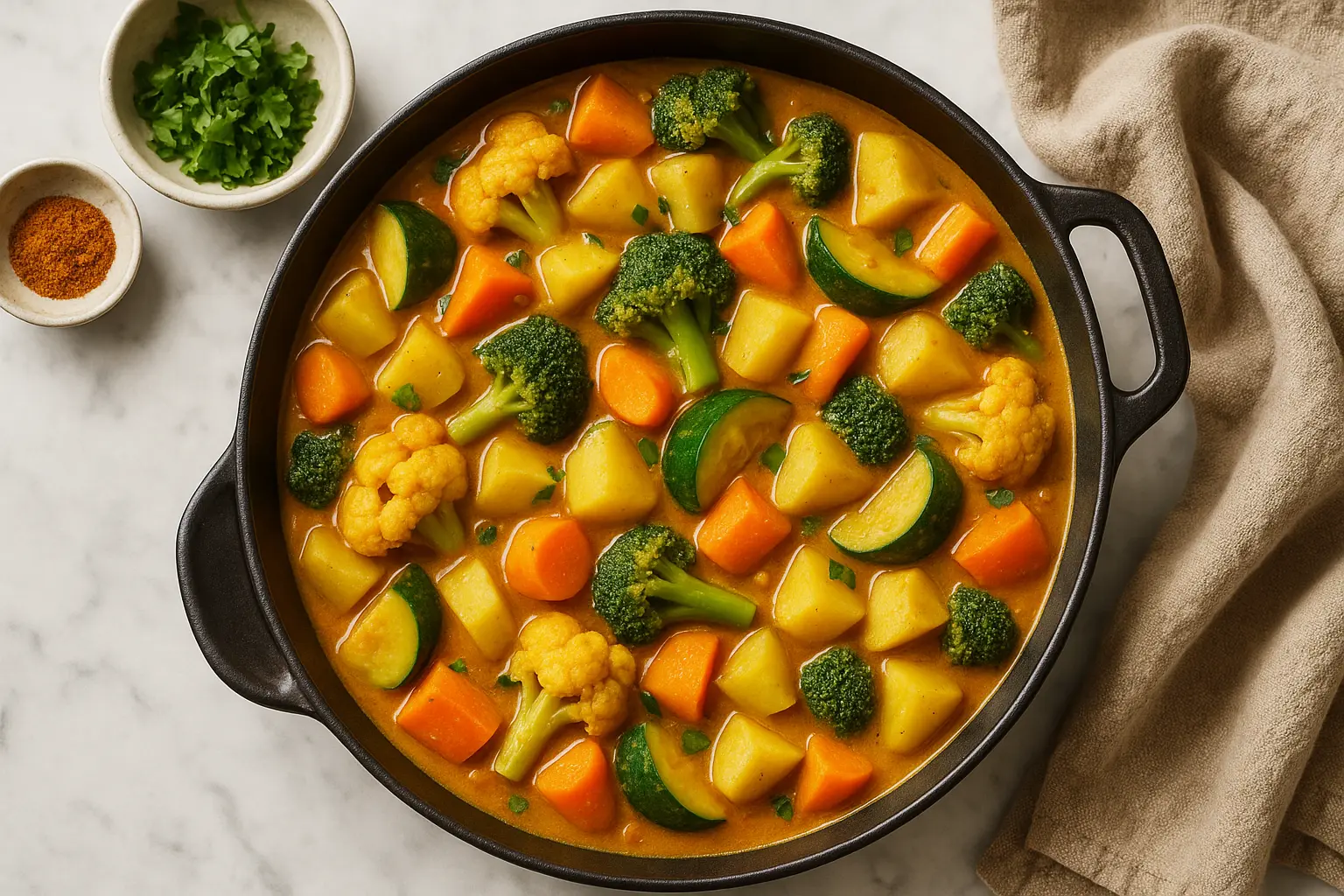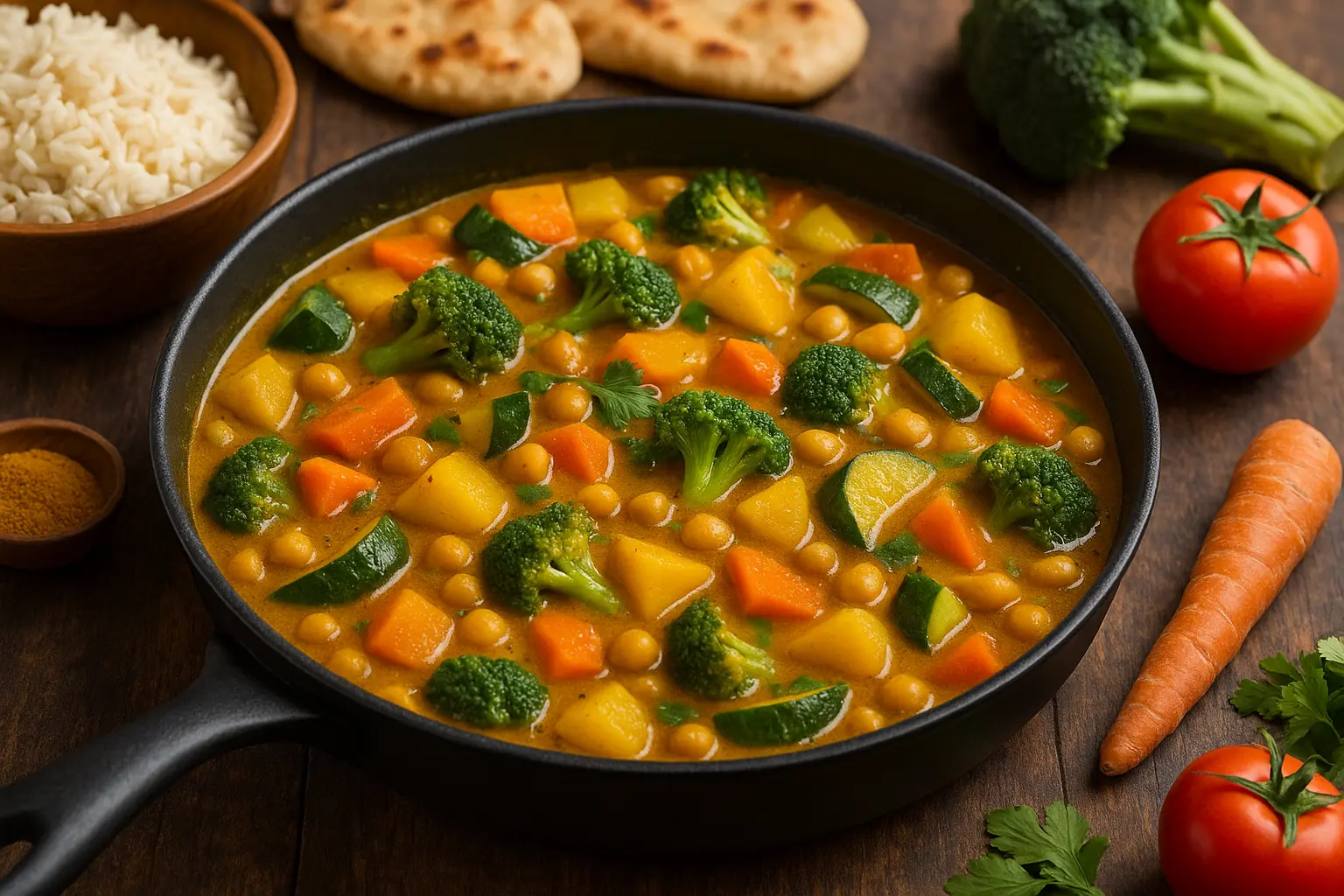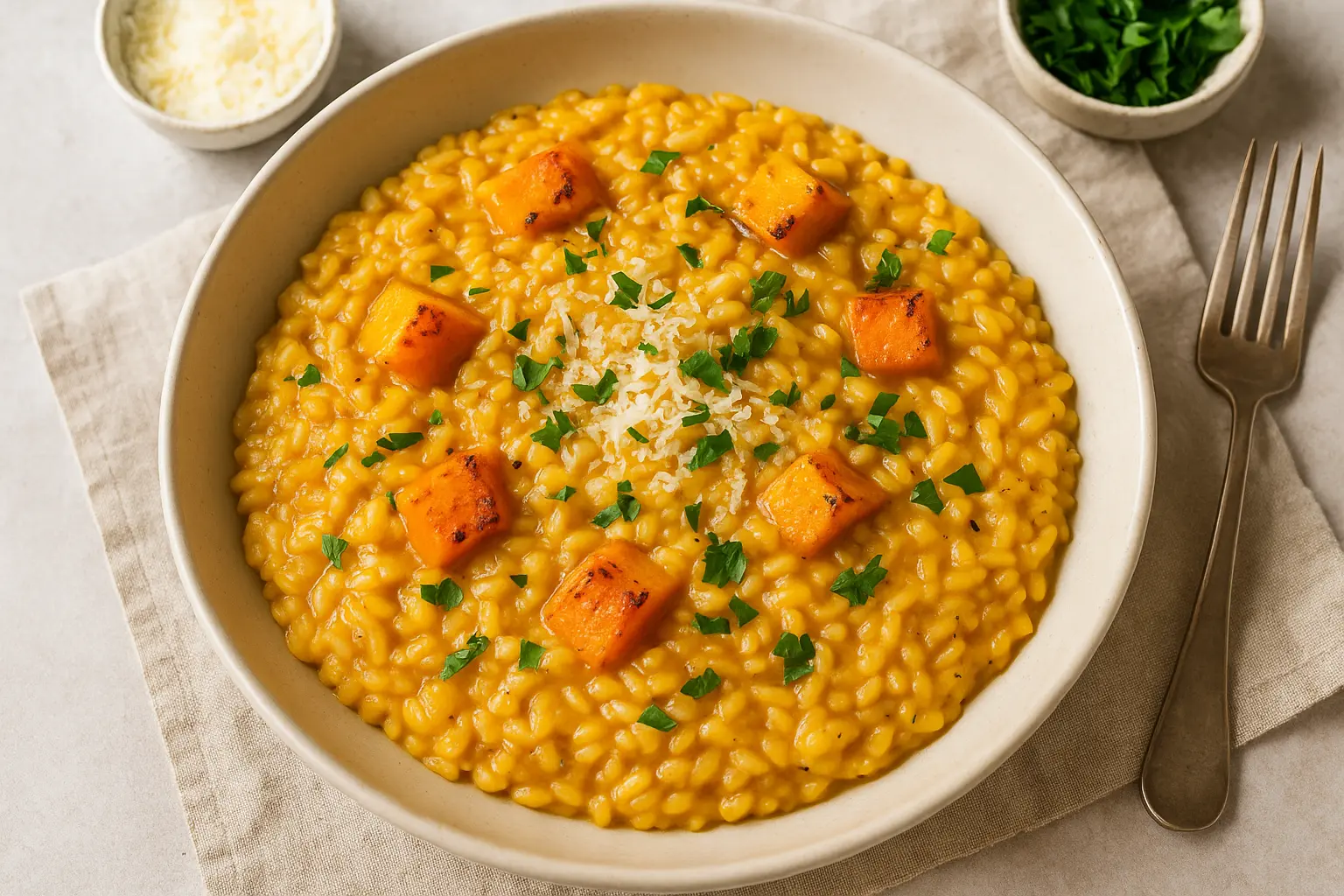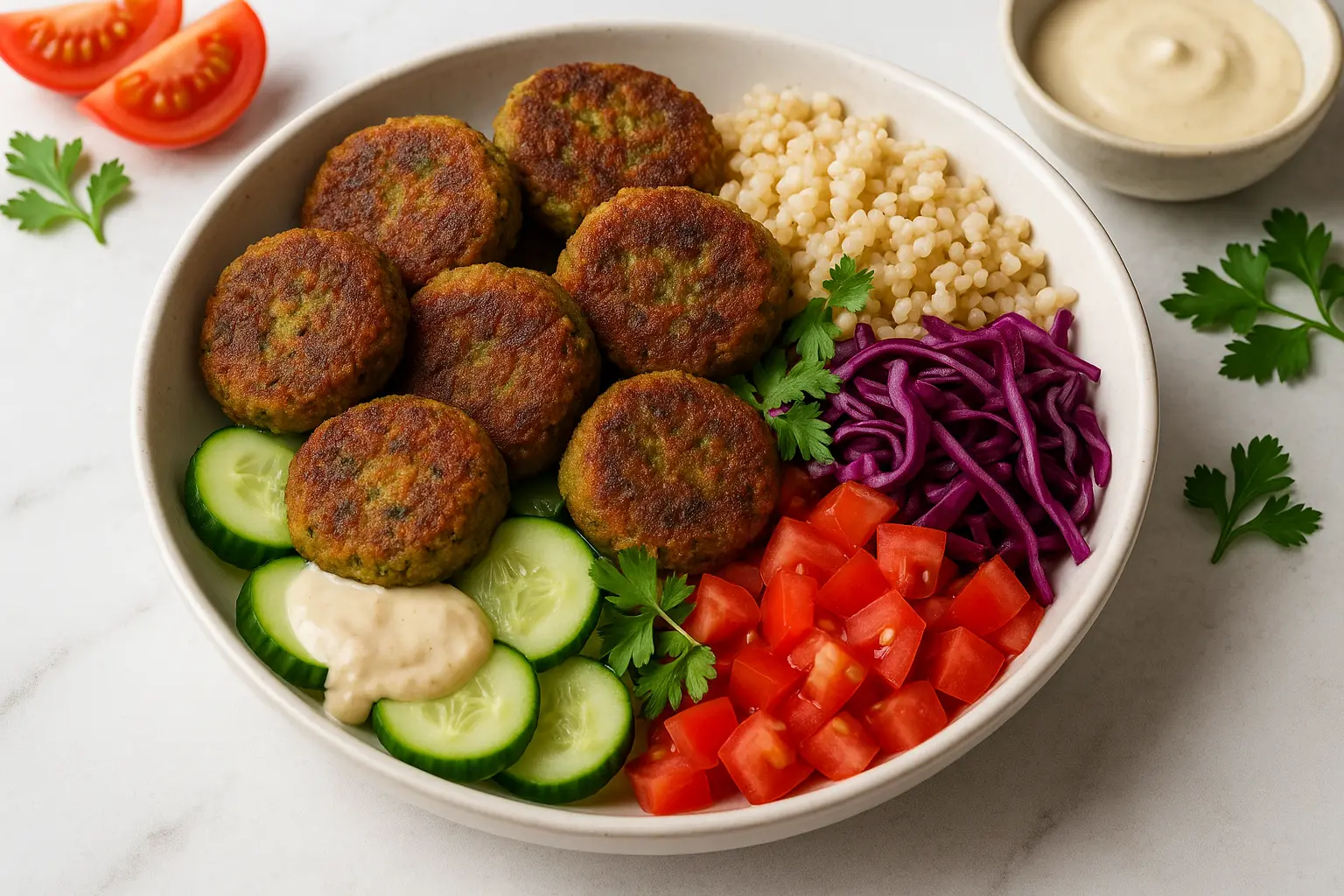Curries have long been one of the most comforting and versatile meals enjoyed across the globe. From Indian households to Thai kitchens, vegetable curries have been the backbone of wholesome, flavorful, and satisfying meals. But there’s one golden rule that elevates any curry from good to unforgettable: seasonality. Cooking with fresh, seasonal vegetables not only improves taste and nutrition but also helps keep your meals budget-friendly and sustainable.
In this comprehensive guide, we’ll explore how to prepare seasonal vegetable curries with ease, all cooked conveniently on the stovetop. Whether you’re new to curry making or an experienced home cook, you’ll find step-by-step methods, variations, tips, and recipes to match every season of the year.

Why Seasonal Vegetable Curries?
Cooking with seasonal vegetables offers more than just freshness. Here’s why:
- Better Flavor: Vegetables harvested in their peak season carry more natural sweetness, aroma, and texture.
- Nutrient Rich: Seasonal produce tends to be higher in vitamins, minerals, and antioxidants.
- Affordable: Local, in-season vegetables are cheaper than imported or out-of-season alternatives.
- Eco-Friendly: Choosing seasonal produce reduces the environmental footprint by lowering the need for long-distance transport and storage.
When these vegetables are combined with a curry’s rich blend of spices, coconut milk, or tomato bases, the result is both nourishing and delicious.
The Basics of Stovetop Curry Making
Before diving into seasonal variations, let’s look at the foundations of stovetop curries.
1. Base Ingredients
Most curries start with:
- Onion, garlic, and ginger – the holy trinity of flavor.
- Spices – cumin, coriander, turmeric, chili powder, and garam masala.
- Liquid element – tomatoes (fresh or canned), coconut milk, or a simple vegetable stock.
2. Cooking Process
- Sauté aromatics – onions until golden, then ginger and garlic.
- Bloom the spices – dry spices are lightly fried in oil to release their essential oils.
- Add vegetables – seasonal produce is layered in according to cooking time (root veggies first, leafy greens last).
- Simmer in liquid – coconut milk or tomato base for 15–30 minutes.
- Finish – add herbs like coriander, squeeze of lemon/lime, or a swirl of plant-based yogurt.
3. Tools You Need
- A heavy-bottom pot or deep skillet
- Sharp knife for prepping vegetables
- Wooden spoon for stirring
- Spice jars or grinder for whole spices
Seasonal Curries Throughout the Year
Each season offers unique produce that can transform your curry. Let’s explore season by season.
Spring Curries
Fresh, light, and green are the themes of spring curries.
Best Veggies:
- Asparagus
- Green beans
- Spinach
- Zucchini
- Peas
Recipe Idea: Spring Green Coconut Curry
A vibrant curry with asparagus, zucchini, and peas simmered in coconut milk with green chili and lime. Perfect with jasmine rice.
Flavor Tips:
- Add fresh mint or coriander at the end.
- Use lighter spices like fennel or coriander seeds to keep flavors delicate.
Summer Curries
Bold, colorful, and slightly tangy.
Best Veggies:
- Tomatoes
- Bell peppers
- Eggplant
- Okra
- Corn
Recipe Idea: Smoky Eggplant & Tomato Curry
Charred eggplant blended into a tomato base with bell peppers and corn kernels. The natural sweetness of summer veggies balances chili heat beautifully.
Flavor Tips:
- Try adding smoked paprika or mustard seeds for depth.
- Serve with flatbreads like roti or naan.
Autumn Curries
Hearty, grounding, and earthy.
Best Veggies:
- Pumpkin
- Sweet potato
- Cauliflower
- Mushrooms
- Carrots
Recipe Idea: Pumpkin & Cauliflower Curry
Pumpkin chunks simmered with cauliflower florets in a spiced tomato base, finished with a touch of coconut cream.
Flavor Tips:
- Add warming spices like cinnamon or nutmeg.
- Garnish with toasted pumpkin seeds for crunch.
Winter Curries
Comforting, rich, and slow-simmered.
Best Veggies:
- Cabbage
- Kale
- Broccoli
- Potatoes
- Turnips
Recipe Idea: Spiced Potato & Kale Curry
A hearty curry with potatoes, kale, and warming spices like cloves and cardamom. Best served hot with rice or chapati.
Flavor Tips:
- Add ginger generously to balance winter chill.
- Try finishing with cashew cream for richness.
1-Pot Curry Recipes for Busy Weeknights
Cooking seasonal curries doesn’t need multiple pans. Here are some one-pot wonders:
- Mixed Veg Curry: Use any combo of seasonal produce with tomato base.
- Lentil & Veg Curry: Add red lentils for protein and texture.
- Chickpea & Spinach Curry: Pantry-friendly and quick to make.
How to Balance Spices and Flavors
Curry is about balance:
- Heat from chili
- Earthiness from cumin and coriander
- Warmth from turmeric and cinnamon
- Sweetness from coconut milk or caramelized onion
- Tang from tomatoes or lemon juice
A simple formula:
- Start mild, taste often, and adjust gradually.
- Always bloom spices in oil.
- Finish with something fresh (herbs, citrus).
Tips for Perfect Curries Every Time
- Cut veggies evenly – ensures they cook at the same rate.
- Cook aromatics thoroughly – undercooked onions make curry bitter.
- Layer flavors – add spices gradually.
- Don’t rush simmering – low and slow makes deeper flavors.
- Rest before serving – let curry sit 10 minutes for flavors to meld.
Pairing Curries with Sides
- Rice: Basmati, jasmine, or brown rice.
- Flatbreads: Chapati, roti, naan.
- Accompaniments: Pickles, chutneys, raita (plant-based for vegan).
Budget-Friendly Curry Cooking
- Buy seasonal produce in bulk.
- Use pantry staples like lentils and canned tomatoes.
- Freeze leftovers in portions for quick meals.
- Repurpose curry into wraps, soup bases, or pasta sauces.
Variations Around the World
- Indian Curries: Rich use of spices, tomato, and yogurt or coconut bases.
- Thai Curries: Curry pastes with coconut milk, lemongrass, galangal.
- Japanese Curry: Mild, sweeter, thickened with roux.
- Middle Eastern Curries: Lentils, chickpeas, earthy spices.
Stovetop Only: Why It Works Best
Stovetop curries allow better control of heat and spice blooming, ensure vegetables don’t overcook, and develop deep, layered flavors without the need for slow cookers or ovens.
Conclusion
Seasonal vegetable curries are an easy, healthy, and versatile way to enjoy fresh produce throughout the year. By combining seasonal ingredients with simple stovetop methods, you can create flavorful vegan meals that suit any mood, budget, or occasion.
Whether it’s a light asparagus curry in spring or a hearty potato curry in winter, the possibilities are endless when you cook with what’s fresh and available.
Leave a comment
Your email address will not be published. Required fields are marked *




















